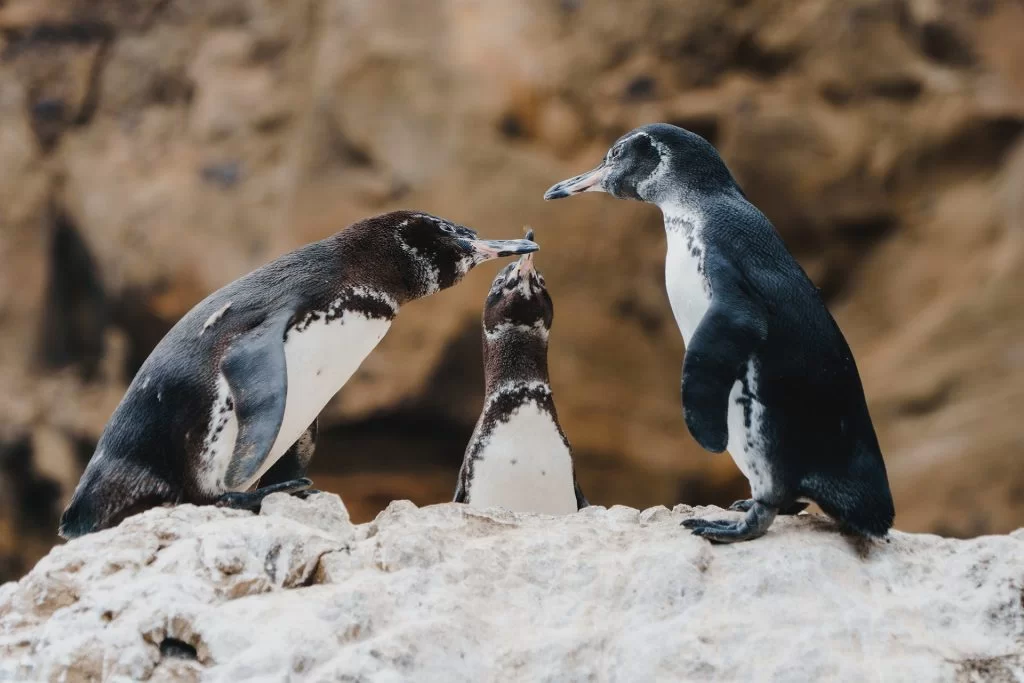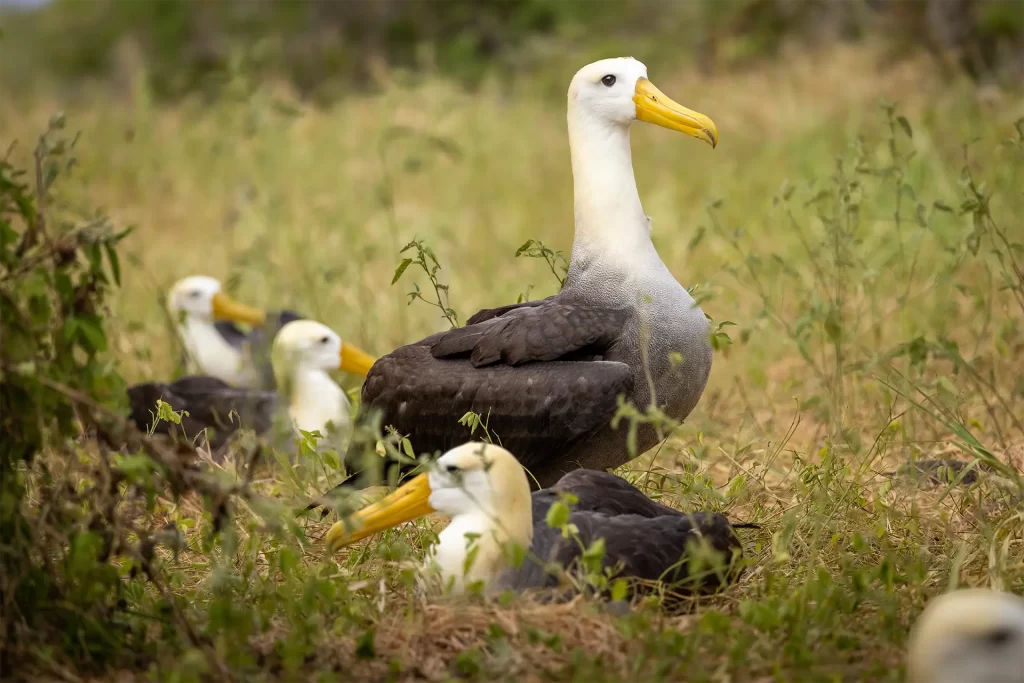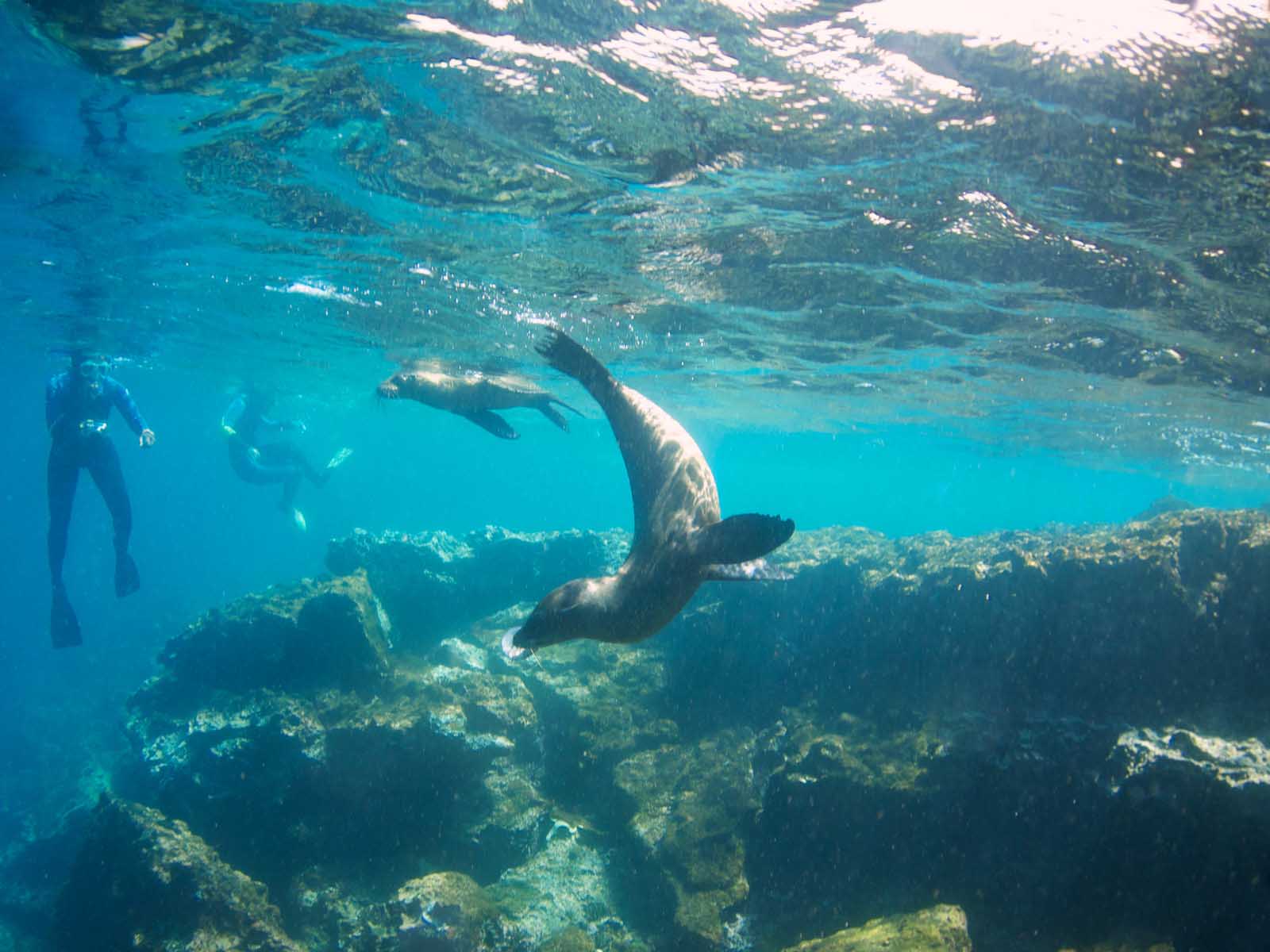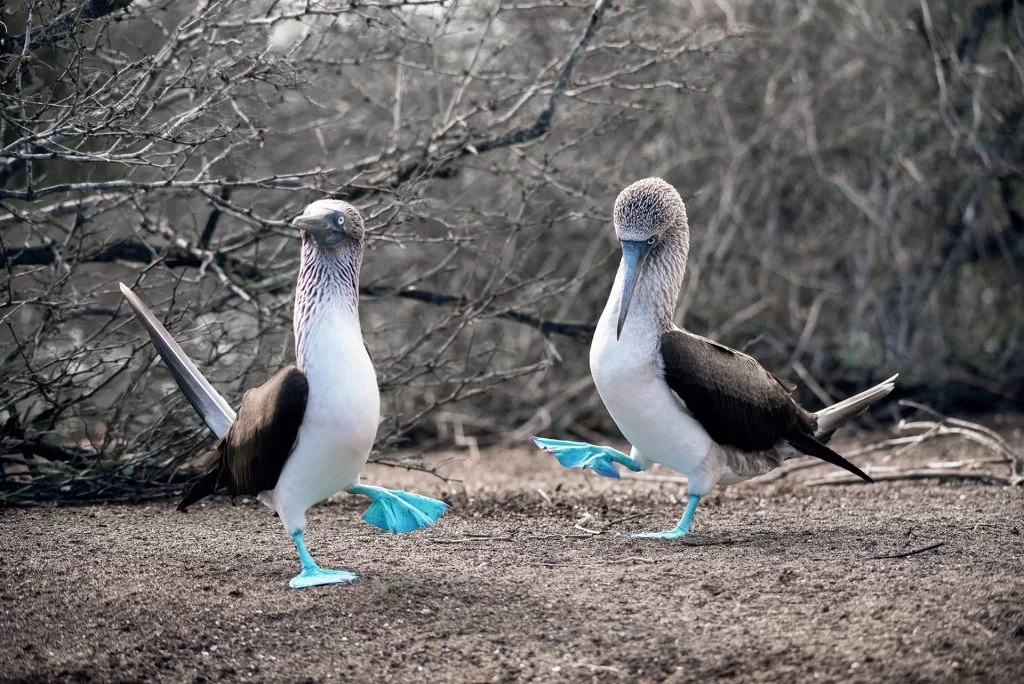When Is The Best Time To Visit the Galapagos Islands
Deciding the best time to visit the Galapagos Islands depends on what you want to see and do. The islands offer different experiences in the wet season and dry season, making any time a good time to explore their natural beauty.
Wet Season (December to June)
The wet season in the Galapagos Islands runs from December to June. This time is ideal for travelers who love underwater exploration because of its warm ocean temperatures and rich marine life.
- The season starts in December, bringing daily rains but also warmer air and sea temperatures, making it perfect for snorkeling and diving.
- From December to May, the islands experience a tropical climate with average daily temperatures around 75°F (24°C) to 80°F (26°C).
- Ocean temperatures during these months range from 73°F (23°C) to 79°F (26°C), inviting for anyone looking to explore the underwater world.
- Wildlife activities are at their peak with mating, nesting, and hatching cycles observable across the islands.
- June marks the arrival of whales, adding an exciting element for visitors interested in marine life observation.
- The ecological diversity is breathtaking, offering chances to see various species in their natural breeding season.
- Nature conservation efforts are noticeable as you travel through different islands, allowing close encounters with wildlife while ensuring environmental preservation.
- For those keen on observing animals up close, this season provides unparalleled opportunities for wildlife observation amidst lush surroundings.
- Snorkelers and divers get to enjoy clearer waters despite the rains due to the plankton-rich seas that attract an abundance of fish and other marine creatures.
- Last but not least, this period supports ecological diversity by allowing tourists to witness first-hand the unique breeding behaviors and natural habitats of creatures exclusive to the Galapagos Islands.



Traveling during the wet season offers a blend of warm weather conditions ideal for beach lovers and nature enthusiasts alike, coupled with vibrant wildlife activity that’s hard to match at any other time of the year.
Dry Season (July to November)
The Dry Season runs from July to November. This period is the best time to visit the Galapagos Islands.



- July: Little birds are born during this month. You can spot many dolphins in the waters.
- August: Flamingos become a common sight. They gather in large groups, making it great for birdwatching.
- September: Penguins are more active now. They come out more often, giving you a chance to see these unique birds.
- October: Blue-footed boobies fill the islands. Their bright blue feet will catch your eye as they perform their mating dances.
- November: Sea lion babies start to appear on the shores. Watching them play is a fun activity for travelers.
Daily temperatures stay between 70°F (21°C) and 73°F (22°C). Expect clear skies and gentle breezes during this time. Cooler water temperatures range from 70°F (21°C) to 72°F (24°C). These conditions make it perfect for exploring the islands and enjoying diverse wildlife behaviors all around you.
The Galapagos Islands offer different attractions every month. Each season showcases unique wildlife and events. For example, the wet season runs from December to June. During this time, visitors can see the arrival of whales in June.
Mating cycles are active, and many species begin their hatching schedules.
From July to November is the dry season. This time features various highlights too. In July, little birds hatch, and dolphins swim nearby. August brings flamingos into view while September is perfect for spotting penguins.
October showcases blue-footed boobies everywhere, and November welcomes sea lion babies into the world. Tourist regulations control numbers to protect these amazing creatures and their habitats throughout the year.
Key Takeaways
- The Galapagos Islands have two main seasons: the wet season from December to June and the dry season from July to November. Each offers unique wildlife sightings.
- During the wet season, visitors can enjoy warm ocean temperatures perfect for snorkeling and observe breeding behaviors of diverse species. Whales arrive in June, making it a great time for marine life enthusiasts.
- The dry season is ideal for spotting rare birds like blue-footed boobies in October and observing sea lion pups in November. Clear skies during this period make exploring the islands enjoyable.
- Tourist numbers are controlled all year to protect wildlife and habitats, ensuring a sustainable visitation experience.
- Wildlife activities peak at different times, such as penguins being more active in September and flamingos seen in large groups in August, offering travelers varied experiences each month.
Visiting the Galapagos Islands offers great experiences all year round. Each season brings its own charm and unique wildlife.
Get ready to plan your trip!
Frecuently Asked Questions
The islands are a year-round travel spot. The wet season runs from December to June, while the dry season is from July to November.
Daily blue skies and little wind mark the dry season. This weather is great for enjoying the landscapes.
In December, many sea turtles hatch on the beaches. Travelers can also spot adorable baby sea lions.